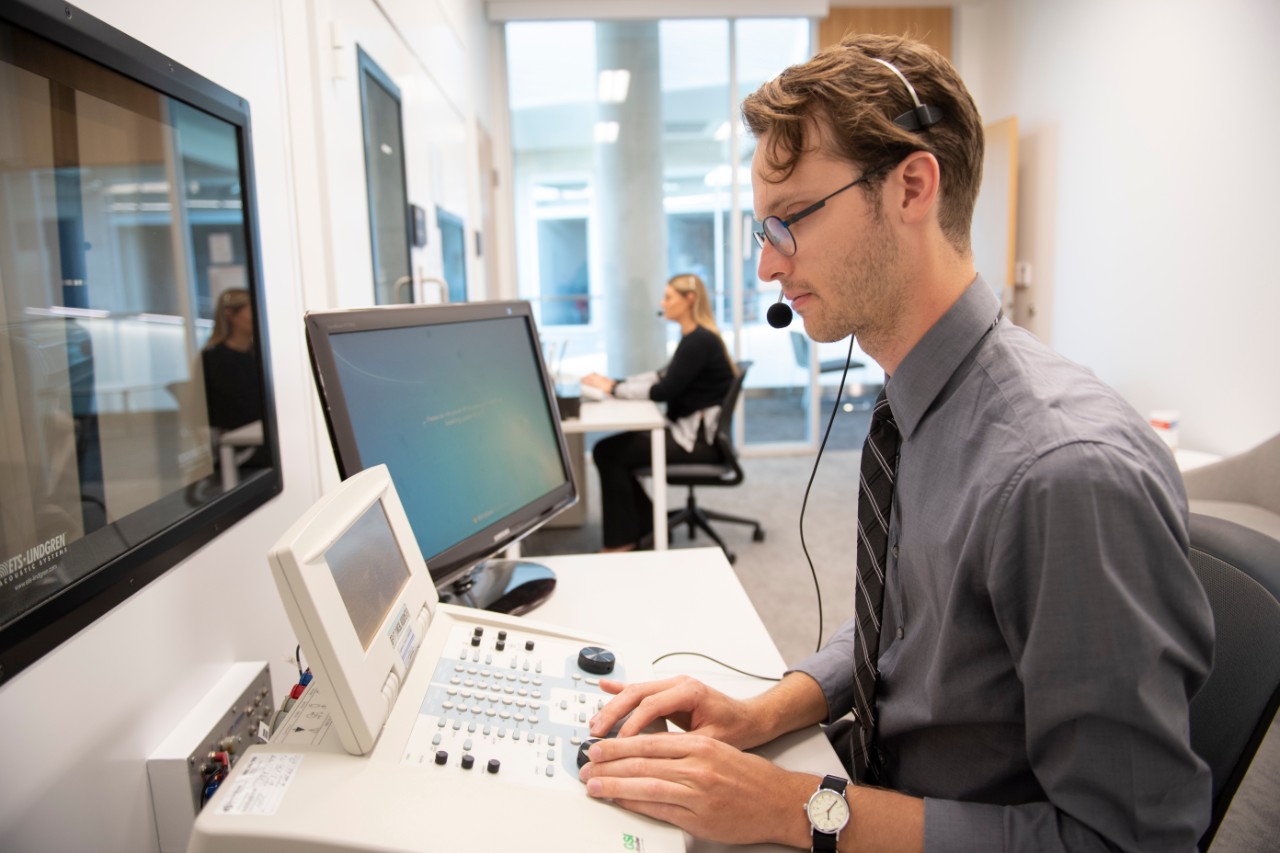
Doctor of Audiology program saves students money by taking two semesters off the curriculum
The new three-year program structure is helps students graduate & earn a professional income faster.
Student loan debt can be a major deterrent for those wanting to pursue a graduate degree. To help ease this financial burden, the UC College of Allied Health Sciences is restructuring its Doctor of Audiology program into an accelerated three-year program. By shaving two semesters off the curriculum, students can graduate faster and save money in the process. This move also sets UC apart from other universities, as CAHS will be one of the select few colleges in the country to offer this three-year Doctor of Audiology program model.
Even though the program is being condensed from 11 semesters to nine, the curriculum won’t be compromised. “Students are still getting the same coursework and meeting the same clinical competencies, but by decreasing the duration, we can help decrease their debt, and that really was a big driving force for us,” says Audiology Program Director and Assistant Professor Katie Russell, AuD, CCC-A.
We are reconfiguring the program so we can make the best use of our students’ time and help them graduate sooner and earn a professional income.
Katie Russell Audiology Program Director
The first student cohort will enter the new program format next summer. The college intentionally chose a summer program start so that students can enter their final externship year on the typical national cycle that the majority of clinical sites observe, Russell says.
In addition to restructuring the program’s duration, the college is also tweaking the curriculum to better serve students. Two years ago, CAHS conducted a review to learn how its audiology program stacked up against peer institutions with higher-ranked programs and those featuring a three-year model. After an extensive internal examination and surveying faculty, students, and community members, Russell and her team identified specific ways to improve the program’s learning objectives, including adding courses to address topics the program wasn’t adequately covering.
“We found that nationally—not just within our program—students aren’t coming in with the critical thinking skills that are required for an advanced degree, so we have added a Foundations of Clinical Practice course that will cover professionalism, clinical reasoning, ethics and other clinical topics,” Russell says. “Some of our courses were touching upon those topics in other avenues, but we didn’t have a designated course specifically dedicated to those topics. This is just one example of a curriculum change we are making.”
Russell is hopeful the new three-year format will make the program more attractive to prospective students. The college’s prime location is an added bonus, she says.
“Because we are in an urban setting, we have access to top-notch clinical sites for our students to rotate through while they are in our program, which is definitely an asset to our program. We have a broad range of opportunities for students to get hands-on clinical experience.” Now, that valuable hands-on experience will just cost students a little less.
Featured image: Photo/Colleen Kelley, UC Creative Services
The University of Cincinnati is the region's destination for thinking, making, doing, discovery and delivery. Next Lives Here.
Learn more about the Doctor of Audiology program at the College of Allied Health Sciences.
Related Stories
Make Hoxworth Blood Center’s special holiday events part of your family celebrations this December
December 12, 2025
This December, Hoxworth Blood Center, University of Cincinnati, is inviting families across Greater Cincinnati to add something truly meaningful to their holiday traditions: giving the gift of life. With festive community events, beloved local partners and special thank-you gifts for donors, Hoxworth is making it easier, and more heartwarming than ever, to roll up your sleeves and help save lives close to home.
Ohio nurses weigh in on proposed federal loan rule
December 12, 2025
Spectrum News journalist Javari Burnett spoke with UC Dean Alicia Ribar and UC nursing students Megan Romero and Nevaeh Haskins about proposed new federal student loan rules. Romero and Haskins, both seniors, were filmed in the College of Nursing’s Simulation Lab.
Bearcat Mascot, Cheer Team and scholarships help celebrate Decision Day
December 12, 2025
Cincinnati media organization provided news coverage of Decision Day activities at the University of Cincinnati on Dec. 10, 2025. Surprise announcements of the 2026 Marian Spencer Scholarship recipient occurred during the day.